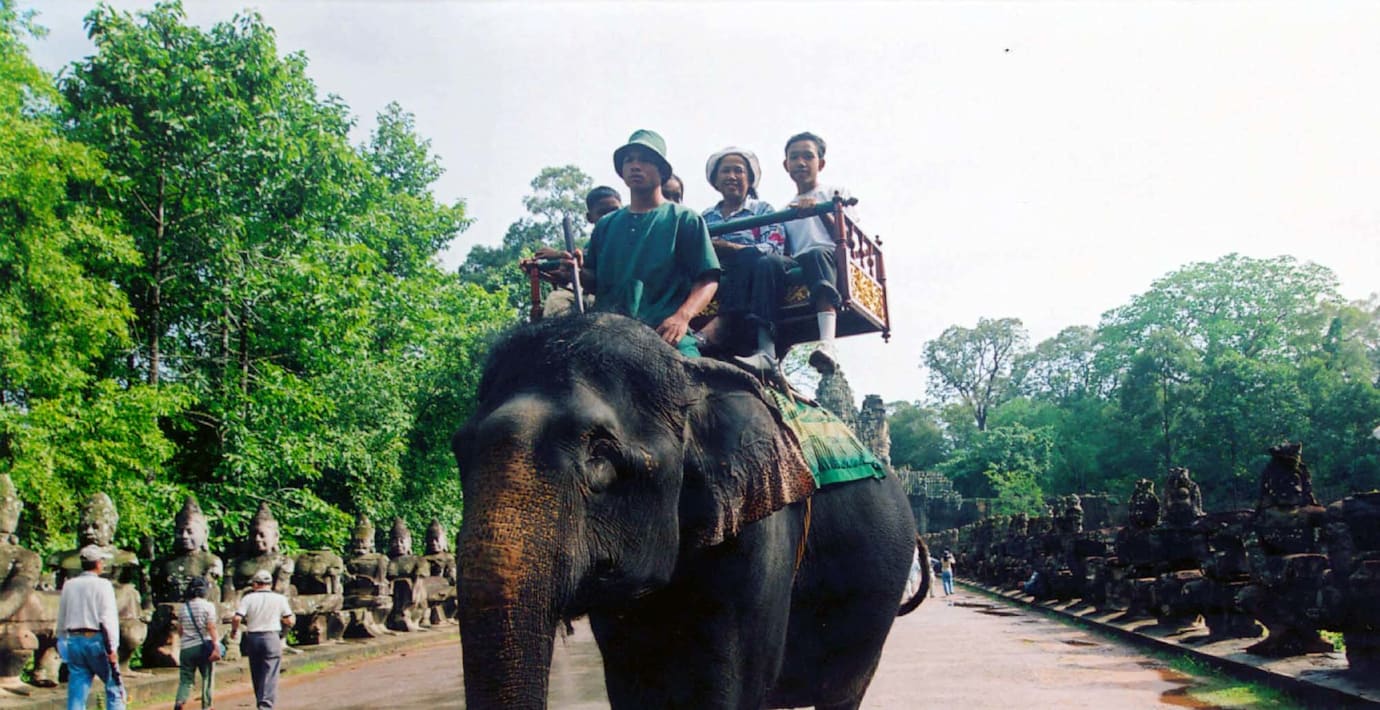
Slutridet på elefanter vid Angkor Wat – får nytt hem
De elefanter som finns vid världsberömda Angkor Wat-templet i Kambodja kommer att flyttas till ett nytt hem i en hållbar miljö i djungeln, säger en talesperson för myndigheterna under torsdagen, enligt nyhetsbyrån AP.
Djuren har fungerat som attraktioner vid Angkor Wat och turister har erbjudits rida på elefanterna gratis.
Flera av de 14 elefanterna lider dock av dålig hälsa och är gamla. Nu kommer de att flyttas till sitt nya hem, 40 kilometer från tempelplatsen. Där kommer turister fortfarande kunna se elefanterna, men inte rida på dem.
bakgrund
Angkor Wat
Wikipedia (en)
Angkor Wat (; Khmer: អង្គរវត្ត, "City/Capital of Temples") is a temple complex in Cambodia and is the largest
religious monument in the world, on a site measuring 162.6 hectares (1,626,000 m2; 402 acres). Originally constructed as a Hindu temple dedicated to the god Vishnu for the Khmer Empire, it was gradually transformed into a Buddhist temple towards the end of the 12th century. It was built by the Khmer King Suryavarman II in the early 12th century in Yaśodharapura (Khmer: យសោធរបុរៈ, present-day Angkor), the capital of the Khmer Empire, as his state temple and eventual mausoleum. Breaking from the Shaiva tradition of previous kings, Angkor Wat was instead dedicated to Vishnu. As the best-preserved temple at the site, it is the only one to have remained a significant religious centre since its foundation. The temple is at the top of the high classical style of Khmer architecture. It has become a symbol of Cambodia, appearing on its national flag, and it is the country's prime attraction for visitors.Angkor Wat combines two basic plans of Khmer temple architecture: the temple-mountain and the later galleried temple. It is designed to represent Mount Meru, home of the devas in Hindu mythology: within a moat more than 5 kilometres (3 mi) long and an outer wall 3.6 kilometres (2.2 mi) long are three rectangular galleries, each raised above the next. At the centre of the temple stands a quincunx of towers. Unlike most Angkorian temples, Angkor Wat is oriented to the west; scholars are divided as to the significance of this. The temple is admired for the grandeur and harmony of the architecture, its extensive bas-reliefs, and for the numerous devatas adorning its walls.
Omni är politiskt obundna och oberoende. Vi strävar efter att ge fler perspektiv på nyheterna. Har du frågor eller synpunkter kring vår rapportering? Kontakta redaktionen



